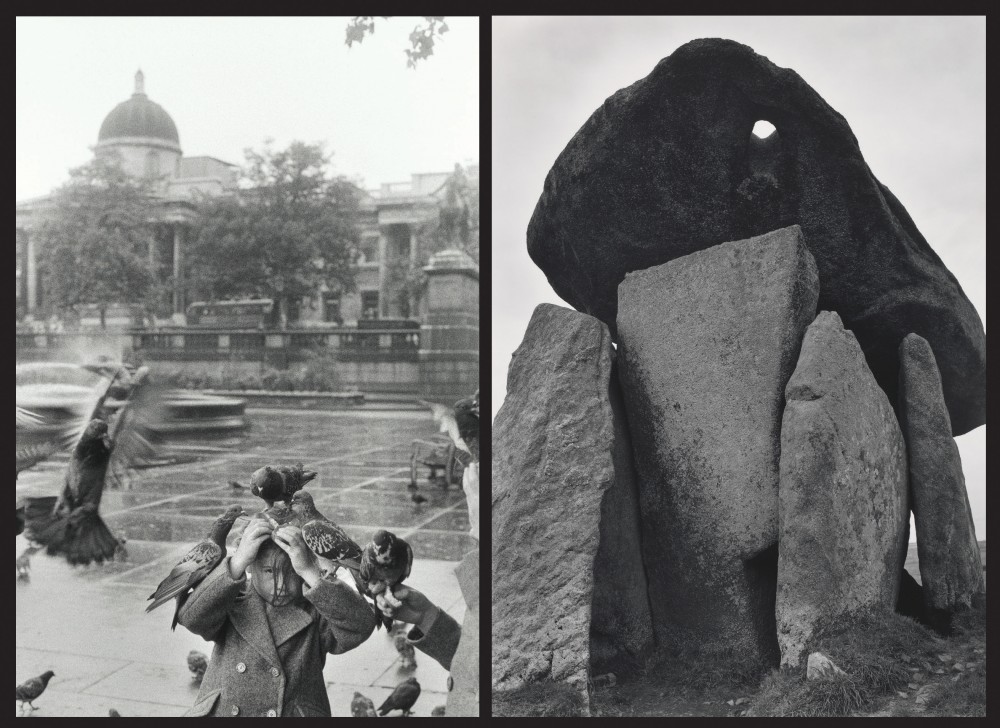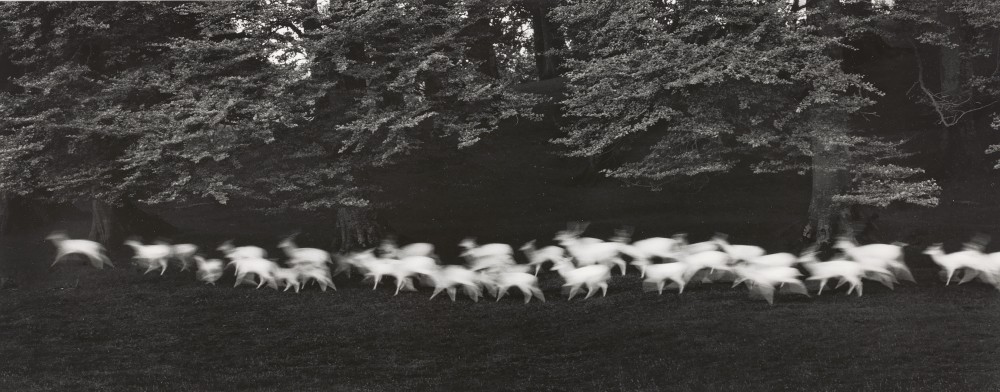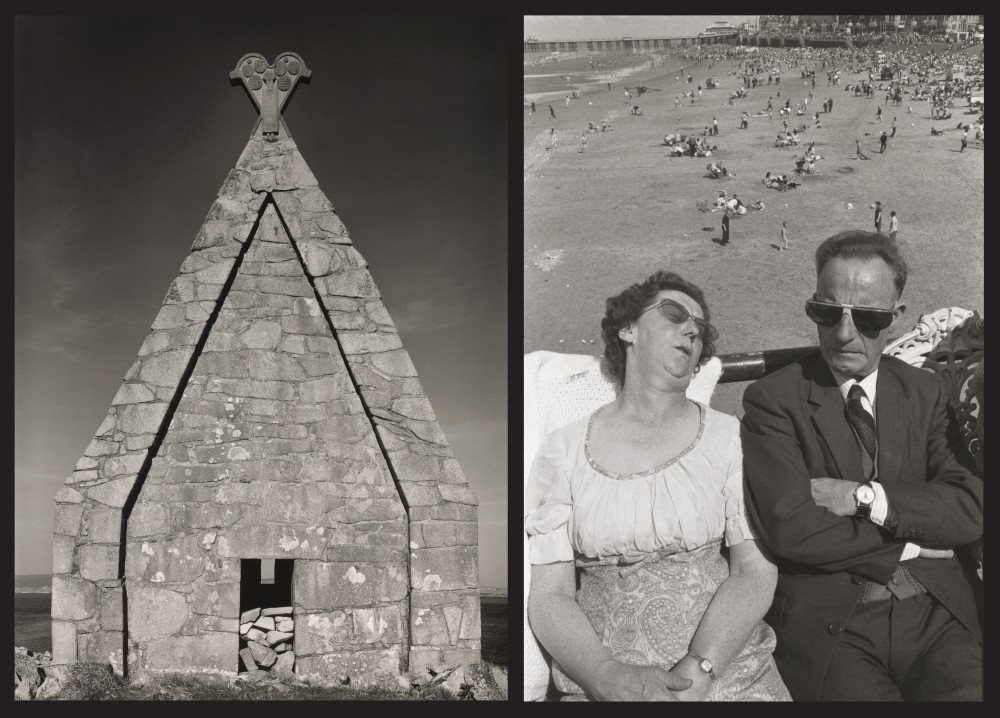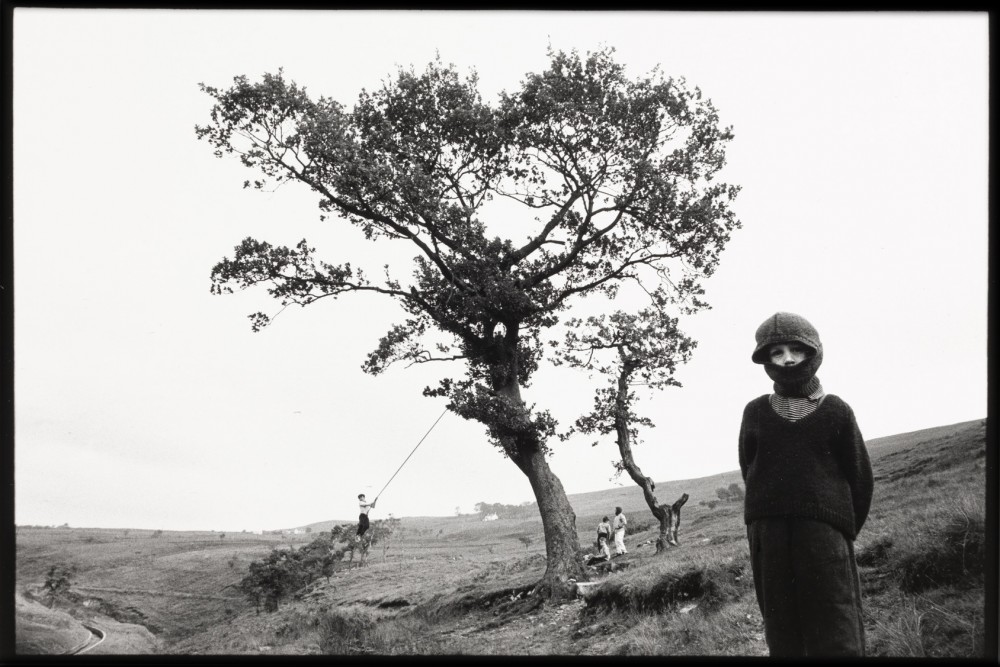Image above: Bruce Davidson, Brighton, 1960, gelatin silver print, Yale Center for British Art, Gift of Ralph and Nancy Segall, © Bruce Davidson/Magnum Photos
Bruce Davidson/ Paul Caponigro: Two American Photographers in Britain and Ireland presents the works of two seminal American photographers together for the first time. Organized by Jenny Watts, Curator of Photography at the Huntington Library, and Scott Wilcox, the Chief Curator of Art Collections and Senior Curator of Prints and Drawings at the Yale Center for British Art, this exhibition focuses on the images produced by each of the photographers while working in the British Isles. Bruce Davidson/ Paul Caponigro: Two American Photographers in Britain and Ireland will be on view at the Yale Center for British Art in New Haven until September 14, then travels to the Huntington in San Marino, California from November 8 through March 9.
Here the curators discuss what inspired the exhibition and the collaborative process that brought it together.
 Bruce Davidson, Trafalgar Square, London, 1960, gelatin silver print, Yale Center for British Art, Friends of British Art Fund, © Bruce Davidson/Magnum Photos // Paul Caponigro, Trethevy Quoit, Cornwall, England, 1977, gelatin silver print, © Paul Caponigro
Bruce Davidson, Trafalgar Square, London, 1960, gelatin silver print, Yale Center for British Art, Friends of British Art Fund, © Bruce Davidson/Magnum Photos // Paul Caponigro, Trethevy Quoit, Cornwall, England, 1977, gelatin silver print, © Paul Caponigro
Nora Landes: When were you first exposed to Bruce Davidson and Paul Caponigro's work? What was your initial reaction to the work of each of these artists?
Jenny Watts: Over the years, I had been more intimately acquainted with Paul Caponigro’s photography, since the Huntington made concerted efforts to acquire his work related to California and the American West, our contemporary collecting strength. No matter the subject, Caponigro’s photographs exert a quiet power that demand attentive looking. They cannot be fully understood at a glance. This has enabled the work, at least for me, to stay relevant and fresh over time. As for Bruce’s work, I was most familiar with his East 100th Street series, which offer similar demands; they asking the viewer to enter the frame with the human subjects he so evocatively portrays.
Scott Wilcox: I had been aware of Bruce and Paul’s photographs for many years, though I must admit that I did not know Bruce’s photographs of England and Scotland until their publication by Steidl in 2006.
NL: How did you decide to put these two very different photographers and bodies of work together? In what ways do you feel they complement one another?
SW: This exhibition came about in a very particular way. At the time of the Steidl publication, one of our great supporters and donors, Henry Hacker, who knows Bruce, suggested that we acquire this body of work and helped us in doing so. We knew we wanted to mount an exhibition. It was the idea of our director, Amy Meyers, to pair Bruce’s work with that of Paul, whom she had known and worked with in her prior position as Curator of American Art at the Huntington. Bruce and Paul each represent a key strand in American photography, and to see those very different visions trained on the British landscape and people throws the photography of each into sharper relief.

Paul Caponigro, Running White Deer, Wicklow, Ireland, 1967, gelatin silver print, © Paul Caponigro
NL: What do you think Davidson and Caponigro's photographs express about the British Isles? How does their American identity contribute to the point of view? Is it distinctly American?
SW: Although they were looking for different things and responding to different kinds of subject matter, each brought a freshness of vision; in Bruce’s case a certain insouciance and in Paul’s case a formal rigor.
JW: Each man’s identity as an American, particularly in regard to their photographic training and praxis, has everything to do with their point of view. Both artists rose up through distinctly different American streams of photography: Bruce as a trained photojournalist with the Magnum agency and Paul as a student of Minor White with his inheritance in the f64 school of sharp focus, nature-inflected work that venerated the finished print. These distinctions certainly informed their approach to making their art. In addition, Paul was influenced by the strains of religious mysticism in vogue in American society in the 1950s and 1960s, including Zen Buddhism and the teachings of George Ivanovich Gurdjieff. Bruce embraced the then-radical aesthetic of Swiss photographer Robert Frank, whose autobiographical and inherently pessimistic vision took a certain branch of the American photo community by storm.
NL: Considering the photographs in "Bruce Davidson/Paul Caponigro: Two American Photographers in Britain and Ireland" were created not by British artists but Americans, how do these images relate to the mission of the Yale Center for British Art?
SW: It has always been important to us at the Yale Center for British Art to consider the art of Britain in the broadest international context. This includes not only British artists working around the globe, but foreign artists working in Britain, responding to the landscape and people of Britain. The interface between British traditions of image-making and those of other cultures is a topic of fundamental interest to us. The Center's collections contain many works by American artists who have been active in England from John Singleton Copley and Benjamin West in the eighteenth and early nineteenth centuries and James McNeill Whistler in the later nineteenth century to R.B. Kitaj in the twentieth century.

Paul Capongiro, Church, St. MacDara’s Island, County Galway, Ireland, 1989, gelatin silver print, © Paul Caponigro // Bruce Davidson, Blackpool, 1965, gelatin silver print, Yale Center for British Art,Gift of Henry S. Hacker, Yale BA 1965, © Bruce Davidson/Magnum Photos
NL: Why bring this exhibition to the Huntington?
JW: This institution holds one of this country’s great collections devoted to British history, literature, and art; each compelling interests of Mr. Huntington himself. We also have a robust photography program dedicated to research and exhibition across the full range of our holdings, numbering close to a million images. Finally, we have close ties with the Yale Center for British Art, which we consider a like-minded sister institution. The chance to exhibit these two artistic virtuosos, each of whom has spent 60 years dedicated to his craft, offered a tantalizing opportunity that dovetailed with our scholarly and exhibition agendas.
NL: In what capacity did the two of you co-curate? How did you blend your knowledge and expertise?
JW: Scott and I began working on this project in 2009 when I accompanied my husband to Yale for his year-long sabbatical. I am a dyed-in-the-wool Americanist with an expertise in the history of photography, so I brought that knowledge and training to bear. Scott has an extraordinary grasp of British art and aesthetics that was fundamental to understanding the context in which both of these contemporary artists operated.
SW: Jenny as a photography curator has a wealth of experience and expertise that is far beyond my own, and a knowledge of the photographic scene in America in the twentieth century that was crucial in placing Paul and Bruce’s work in that important context. I was able to provide a sense of how these photographs fit within longstanding traditions of representing Britain and Ireland. I must say that Jenny was an ideal collaborator. Our approaches to the project and our tastes were so closely aligned.
NL: Why do you think photography is an important medium?
JW: For me the power of photography comes down to its democratic impulse and its immediacy. I work with a broad range of photographers and photographic traditions, from the commercial to the amateur and the artist to the unknown. While artists like Davidson and Caponigro bring a rigor to both the process and the outcome that sets the work apart, photographs from all quarters, even the most unlikely, have the power to move and inform and help us ask questions in a way few other mediums can.

Bruce Davidson, Wales, 1965, gelatin silver print,Yale Center for British Art, Gift of Henry S. Hacker, Yale BA 1965, © Bruce Davidson/Magnum Photos
Interviewed by Nora Landes

